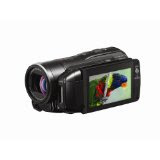Reading internet reviews is, nonetheless, helpful provided that you know what you should look for in a review. This is because the Internet is very easy to access. A few of the people who own models of different HD video cameras tend to write their opinions about a certain product most especially if they are more than satisfied with their video camera.
That leads us to tip no. 1. Look for video cameras that have a lot of reviews. You don't want to buy a camera that has just been newly released. Wait for other people's reviews and opinions on the camera to prevent you from making any regrets or wrong decisions in the future.
You can always opt for a techie magazine and technology sections of papers. You'll be likely to find a review, but nothing beats the accessibility and the updates of the internet. Once you already have your reviews - read them. Don't just skim through the lines, read them thoroughly. An HD video camera is not just another bracelet that you can buy easily even without your month's salary. Because they are expensive, knowing the specs of each HD video camera is important in buying one.
Look for product specs in your reviews. Specs are the different details and information of a certain model. For those who are not into technology, let me help you with some words that you might encounter.
- Specs - short for specifications
- Digital Video Format - This is the core of the camera - the "operating system". AVCHD are usually good video formats for cameras.
- Image Stabilizers or ISO - This talks about the camera's capability to record and prevent unnecessary movements like hand shaking, breathing, and the like.
- Programs - Usually this pertains to the different modes that your camera can change to. For example night mode, close up mode, snow, sunny, etc.
- Mic Zoom - A microphone zoom is very useful in when you're zooming in and out. This prevents your camera from recording sounds near you while shooting a scene that is a few meters away. A mic zoom will also record the sounds that is created in the scene which you are shooting.
- Media - cameras use different types of media such as tapes, disks, and cards. Cards are usually preferred by consumers rather than tapes. Expect cameras that use disks to be slightly bigger since they have to accommodate one disk into the camera.
So far these are the common terms that you may see in an HD video camera review. Remember to always read other users opinions on a certain camera to help you make your final decision on which HD video camera you should buy.
About the Author
Get the top professional HD video camera for your needs. Check out the latest HD video camera review online.








